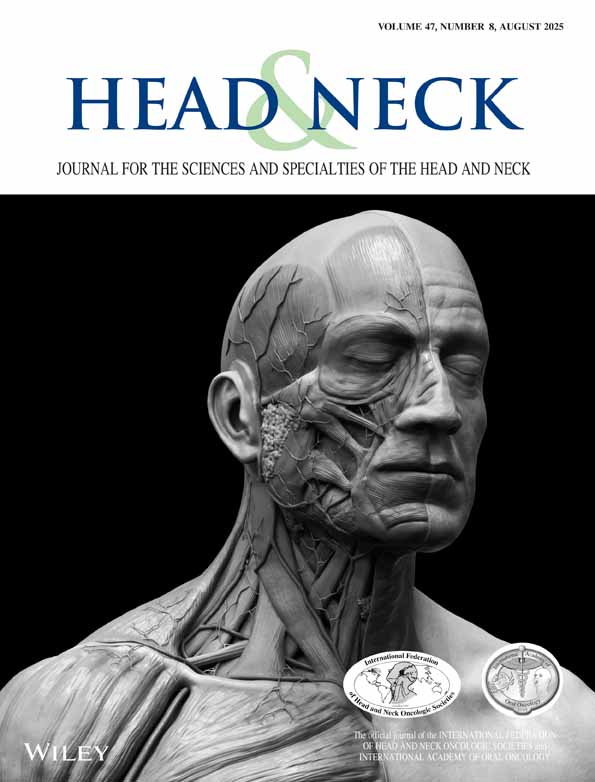Neck dissection in the combined-modality therapy of patients with locoregionally advanced head and neck cancer
Abstract
Purpose.
The purpose of this study was to evaluate the role of neck lymph node (ND) in the combined dissection modality therapy for locoregionally advanced head and neck.
Methods.
We identified patients with N2–N3 head and neck cancers who were enrolled in three consecutive multicenter phase II studies of concurrent chemoradiotherapy utilizing 5-fluorouracil and hydroxyurea on an alternate-week schedule with radiotherapy twice daily plus either cisplatin (C-FHX) or paclitaxel (T-FHX). Patients with unknown primary tumors, nasopharyngeal or paranasal sinus primaries, nonsquamous histology, progression or death during therapy, or incomplete therapy were excluded.
Results.
A total of 131 patients were analyzed. Seventy-nine percent had N2 stage. ND was performed in 92 patients (70%), either prior to enrollment (n = 31) or after chemoradiotherapy (n = 61). With a median follow-up of 4.6 years, the 5-year locoregional and neck progression-free survival (PFS) rates were higher in patients with ND versus patients without ND: 88% versus 74% (p = .02) and 99% versus 82% (p = .0007). respectively; there was also a trend toward improved overall survival (OS) with ND, but PFS and distant PFS were comparable. In the subset of patients with N3 disease, ND was associated not only with better locoregional control but also with improved distant PFS. However, in patients with clinical complete response (n = 92), no significant differences in PFS (68% vs 75% at 5 years, p = .53) or any other survival parameters with or without ND were observed.
Conclusions.
ND improves neck control and is required for patients with clinically residual disease or N3 neck cancer but has no significant impact on the outcome of patients with N2 stage disease who are rendered clinically disease-free with intensive concurrent chemoradiotherapy.© 2003 Wiley Periodicals, Inc. Head Neck 26: 447–455, 2004




